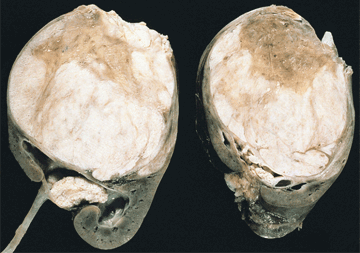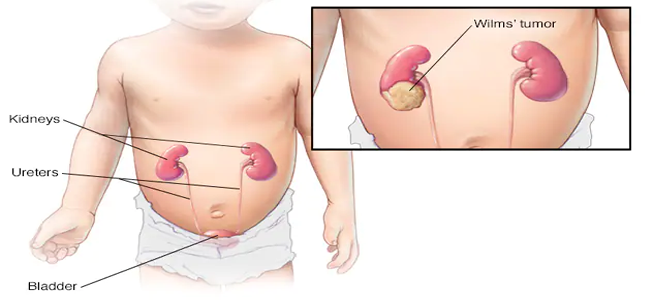Wilms Tumor Treatment in Delhi NCR
Introduction:
Wilms’ tumour is a rare type of kidney cancer that mostly affects children. It is the most common type of kidney cancer in children, also known as nephroblastoma. Wilms’ tumour most commonly affects children aged three to four years of age, and it becomes much less common after the age of five.
Wilms’ tumour is most commonly found in one kidney, but it can occasionally be found in both kidneys at the same time which is called bilateral Wilm’stumor.
Advances in the diagnosis and treatment of Wilms’ tumour have greatly improved the outcome (prognosis) for children with this disease over the years. Most children with Wilms’ tumour have a very good prognosis, almost 90% of them can be cured if they are diagnosed at an early stage and receive appropriate treatment.

Symptoms and signs:
The signs and symptoms of a Wilms’ tumour vary greatly, and some children show no obvious signs at all except for abdominal swelling. However, the majority of children with Wilms’ tumour exhibit one or more of the following signs and symptoms:
- A palpable abdominal mass
- Swelling in the abdomen
- Pain in the abdomen
Other signs and symptoms could be:
- Fever
- Urine with blood
- Vomiting or nausea, or both
- Constipation
- Appetite loss
- Breathing difficulty
- High blood pressure.

Cause
It is unknown what causes Wilms' tumour, but mostly due to changes in multiple genes.Only 1-2% of cases can be hereditary. Cancer develops when cells' DNA becomes faulty. The errors allow the cells to grow and divide inexorably, allowing them to live when other cells would die. A tumour develops from the accumulation of cells. This process occurs in the kidney cells of Wilms' tumour.
Risk Factor
- Aniridia: The coloured portion of the eye forms only partially or not at all in aniridia.
- Hemihypertrophy is a condition in which one side of the body or a portion of the body is noticeably larger than the other.
- The WAGR syndrome. Wilms tumour, aniridia, genital and urinary system abnormalities, and delayed onset renal failure.
- Beckwith-Wiedemannsyndrome: Children with this syndrome are typically much larger than average(macrosomia). Other symptoms may include abdominal organs protruding into the base of the umbilical cord,a large tongue (macroglossia), enlarged internal organs, and ear abnormalities.
- Denys Drash Syndrome: ambiguous genitalia, early renal failure with Wilm’stumor.
- Wilms' tumour cannot be avoided by anything you or your child can do.
- If your child has Wilms tumour risk factors (such as known associated syndromes) or family history of this tumor then , periodic kidney ultrasounds to check for kidney abnormalities is recommended.
Wilms' tumour can appear as part of a number of rare syndromes, including:
Diagnosis:
The following tests are done to diagnose a Wilms tumour:
- A physical examination. The doctor will search for signs of a tumour.
- Blood and urine tests are performed. These lab tests will not detect Wilms tumour, but they will show how well the kidneys are working and may reveal certain kidney problems or low blood counts.
- Imaging studies: imaging tests for the kidneys aid Doctor in determining whether your child has a kidney tumour. Ultrasound, computerized tomography (CT), and magnetic resonance imaging (MRI) are examples of imaging tests.
- Guided percutaneous needle biopsy was earlier not advised in view of tumor spillage but now it is recommended in centres where there is experience of doing this kind of biopsy without any tumor spillage as biopsy will confirm the diagnosis before starting chemotherapy.
Staging
Once your child has been diagnosed Wilms tumour, it is necessary to find out the extent of cancer (stage) as treatment and outcome varies according to the stage of the disease. A chest CT scan, or PET CT scan is recommended to determine the stage of the disease.
- Stage I: The tumor is limited to kidney, completely resected and capsule is intact.
- Stage II: The tumor is completely resected but ,tumor extends beyond the kidneys like penetration of the renal capsule, invasion of blood vessels, renal sinus
- Stage III: The cancer has spread beyond the kidney area to nearby lymph nodes or other abdominal structures; the tumour may spill within the abdomen before or during surgery; or surgery may not altogether remove the tumour.
- Stage IV: means that the cancer has spread beyond the kidney to distant structures such as the lungs, liver, bones, or brain. The fifth stage. Cancer cells have been discovered in both kidneys (bilateral tumors).
Treatment:
Wilms' tumour is typically treated with Chemotherapy and surgery, and in some cases, radiation therapy as well. All patients should receive chemotherapy first as per SIOP guidelines astumor size is reduced with chemotherapy and surgery become much easier to do without any tumor spillage. Duration of chemotherapy and number of drugs used depend on the final stage of the disease.Treatments may differ depending on the stage of cancer. your child's doctor may advise you to seek treatment at a children's cancer centre with experience of treating such small children with cancer.
For enquiries, bookings or support, call us at +91-96508 06846
Need help? Get a call back from our support team
Contact Us

